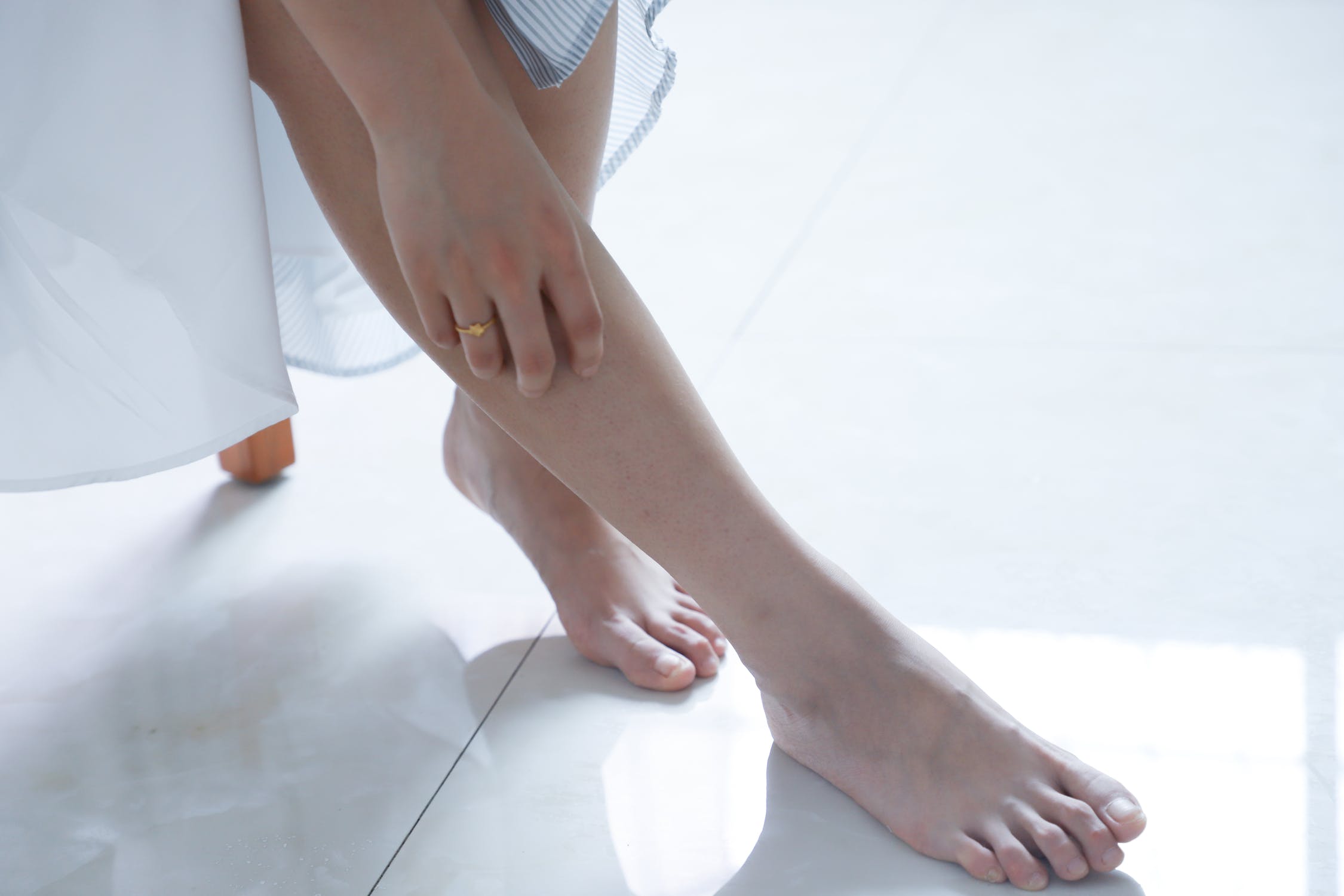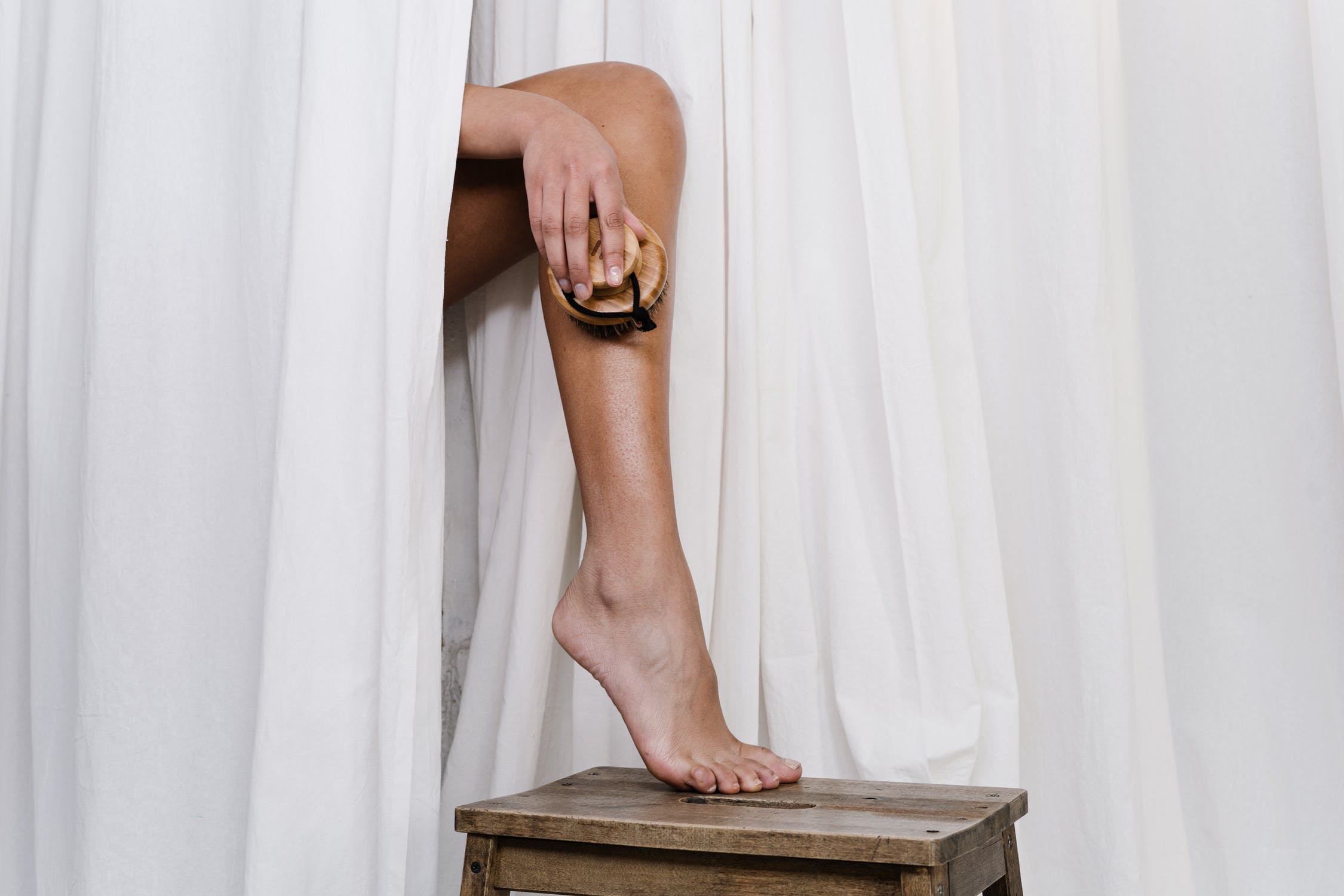What causes stretch marks on outer thighs?
So, you’ve discovered some stretch marks on your outer thighs – shock, horror! No doubt, that’s the common reaction for many of us image-conscious folks. Certainly it’s the reason why we go great lengths to hide flaws and blemishes on our bodies. More so, it’s the same reason why the cosmetic industry is booming. That said, what causes stretch marks on outer thighs is one particular question that interests many women.
Well, it’s true that stretch marks are common on the outer thighs, just as they are common on the arms, and it’s generally fine if they’re hidden in the inner areas of the body that are easily covered up by clothes. But what happens in the summer when you want to flaunt those cute shorts or that trendy miniskirt? It doesn’t help when you look down to discover that you have stretch marks on your thighs, does it? The good news is that, just like mild arthritis, it’s possible to manage the symptoms of stretch marks without the need for surgery.
Are Oranges bad for arthritis?
Nevertheless, I am sure you’re probably still asking yourself where those marks came from? If so, I am here to provide further information on what stretch marks really are and what causes stretch marks on outer thighs.
So, what exactly are stretch marks?

Image credit: Buenosia Carol
Imagine your skin is like te sides of a rubber band. If the band is overstretched too quickly and at the same time its elasticity is restricted, cracks occur. It’s the same with stretch marks.
Stretch marks (also known as striae gravidarum, depending on how they appear) are the result of rapid expansion or contraction of the skin. When the skin expands or contracts abruptly, it causes the collagen to rupture, resulting in long parallel lines or streaks. Usually, these marks appear when the skin is unable to return to its normal form after stretching or shrinking.
Stretch marks can develop on many parts of the body, but they are most common on the stomach, thighs, arms, hips, breasts or buttocks. That said, the areas of the body where stretch marks appear will vary for each individual.
Whilst on the topic of variation, it’s also worth mentioning that both men and women can have stretch marks, but women are more susceptible to them. In fact, women get twice as many stretch marks as men, and from as early as five years old. Luckily, the marks rarely ever become a serious problem; unfortunately, they can be pretty unsightly and it’s understandable if they are affecting your self-image and self-confidence.
Signs and symptoms of stretch marks
Before stretch marks actually appear, the skin in the area tends to become thinner and lighter than other areas of the body. It may also be itchy or irritating. More so, once the marks appear, they start off as wrinkled, elevated streaks with a purple, pinkish or brown hue depending on the colour of your skin. After a while, they fade and flatten out, and switch to a silvery or glossy appearance.
Causes of stretch marks outer thighs
Just like every other area of the body where they occur, stretch marks on the thighs are caused by rapid overstretching or shrinkage of the skin. There are a number of factors which can cause the skin to expand or shrink rapidly and cause stretch marks:
Weight gain
Putting on a lot of weight in a short time can cause the skin to stretch beyond its elastic limits. Many times, the skin isn’t able to resume its normal form after such extreme stretching, and this can lead to the appearance of stretch marks. This is why stretch marks are often associated with obesity and being overweight.
Pregnancy
It’s common knowledge that many women gain a lot of weight in pregnancy. The sudden weight gain in a short time can cause stretch marks both on the outer and inner thighs. Sometimes, stretch marks appear after childbirth because the skin has expanded to accommodate the growing baby, and suddenly contracts again after delivery. There are also instances where the stretch marks appear because of the weight of the developing fetus.
Puberty
Hormonal fluctuations during puberty can lead to the appearance of stretch marks in teenagers. The majority of these stretch marks fade over time and are much less noticeable after adolescence.
Using corticosteroids
Prolonged use of corticosteroid creams can cause stretch marks on the outer thighs. Corticosteroids are generally applied on the skin to treat inflammation; however using such creams for a long time can decrease the levels of collagen in the skin. The end result is a higher risk of developing stretch marks.
Medical conditions
Some medical issues can make a person more likely to get stretch marks. One such condition is Marfan Syndrome which can lead to decreased elasticity in the skin tissue. Additionally, Cushing’s Syndrome also puts you at risk of developing stretch marks: the body produces too much of a hormone that leads to rapid weight gain and makes the skin fragile.
Other causes of stretch marks on outer thighs
A rapid increase of muscle size after intense lower leg exercise can cause the skin to expand and, in turn, leads to stretch marks on the outer thighs. Additionally chemotherapy, prolonged antibiotic therapy, neuroleptics and some surgical operations can also be factors that contribute to the development of stretch marks on the outer thighs. More research is needed in this area but is possible that risk factors like chronic diseases and a family history of stretch marks can make someone more likely to get them.
Treatments for stretch marks on the outer thighs

Image credit: Cottonbro
Like all skin scars, stretch marks are permanent and cannot be completely cured, although they can be reduced. However, various treatments can make them less noticeable, with the most effective being laser treatment.
Laser treatment for stretch marks involves generating tiny flashes of light that penetrate deep into the skin and stimulate the processing of collagen. This creates new, healthy tissue. However, this is a pretty costly procedure that might not be particularly effective, depending on how deep the marks are.
Microneedling is a treatment for stretch marks that involves rolling tiny needles over the skin. The small holes in the skin facilitate the absorption of active ingredients that regenerate the skin. Sounds painful, right? That may well be, but the treatment promises to make those annoying stretch marks less noticeable.
Sadly, there is no evidence to support the idea that some creams and oils can eliminate stretch marks. Nonetheless, if you opt for using creams, lotions or gels for stretch marks, the American Academy of Dermatologists recommends keeping the following in mind:
- Use them on early stretch marks.
- Massage the cream into your skin for better results.
- Be consistent. It might take several weeks to see any results.
Apart from topical applications, there are also various dermatological procedures that can help reduce the visibility of stretch marks to help you get your self-confidence back. Such procedures include:
- Chemical peel
- Microdermabrasion
- Radiofrequency
- Ultrasound
To conclude
We hope you’ve enjoyed reading this piece and that it helps you further understand the causes of stretch marks. Perhaps these marks are affecting your self-esteem and stopping you from confidently wearing shorts, miniskirts or bikinis? If so, it’s worth considering the treatment options we’ve listed above.
However, keep in mind that as with all other procedures, side effects are possible. For all the treatments that have been mentioned, it is important to remember that none of them actually gets rid of stretch marks; they just help to make them less noticeable.
Feel free to share this article if you know someone else who can benefit.


